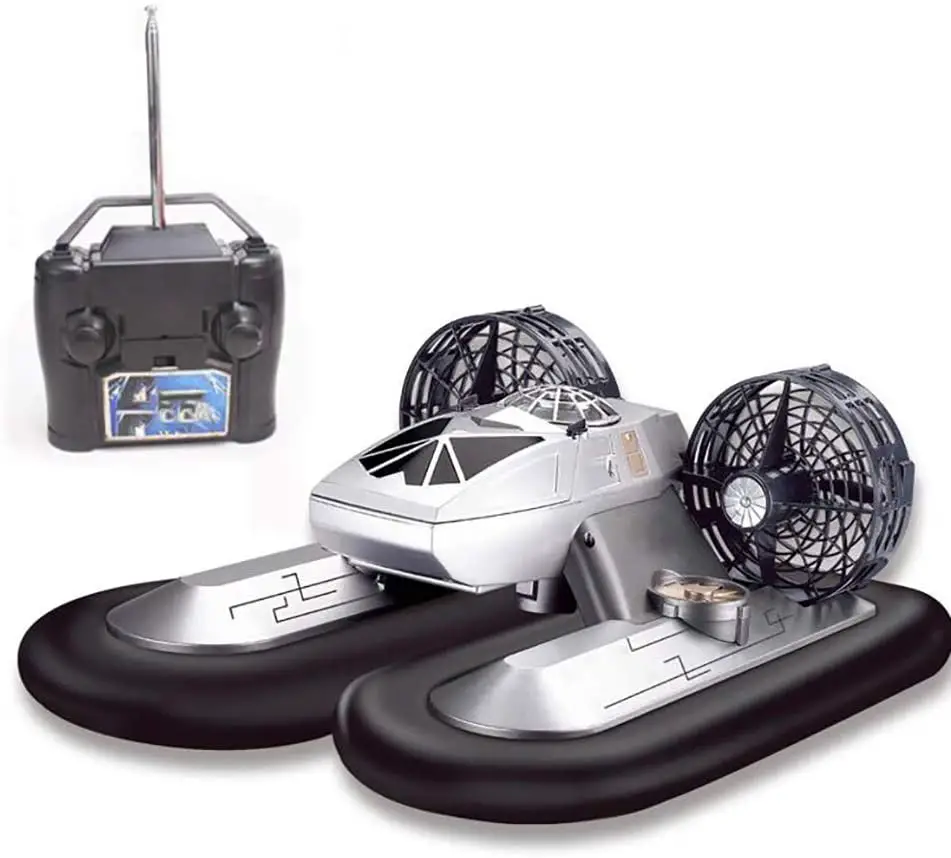
However, design and specifications are subject to change and the progress of design development. 10 km and the maximum cruise speed is 100 km/h. The SD-05 is designed to travel up to approx. The company continues to work toward initiating practical use of flying cars during the World Exposition Osaka, Kansai, scheduled for 2025 in Japan. SkyDrive is in the process of acquiring a type certificate (*2) for the SD-05 from the Ministry of Land, Infrastructure, Transport and Tourism (MLIT), as the first of its kind in Japan. “Based on the design concept of ‘giving wings to daily travel,’ it’s also a safer and more enjoyable travel partner.” “This vehicle is not just a simple means of travelling from point A to B,” Yamamoto said. SkyDrive is developing flying cars with an eye toward realizing a world where they are used in daily life for air mobility much as automobiles are used for daily ground transportation.
#Remote control hover car driver#
Operated by a driver pilot, its flight stability is secured with the assistance of a computer-controlled flight system. The SD-05 is a two-seat, electric-powered compact aircraft with vertical takeoff and landing capabilities.

Headquartered in Toyota City, Aichi Prefecture, SkyDrive is a leading developer and manufacturer of flying cars (*1) and cargo drones in Japan. “Two years have passed since the announcement of the SD-03, which successfully completed its public manned flight test in August 2020, and we are very happy to be able to announce its successor, the SD-05.” “This is another big step towards the realization of flying cars and sky roads,” said Takumi Yamamoto, SkyDrive design director. SkyDrive is planning to use the SD-05, currently in development, to launch air taxi service in the Osaka Bay area during the world exposition scheduled for 2025 in Osaka, Japan. has unveiled the design of its commercial model flying car - the SkyDrive SD-05. Backpack-sized UAVs will provide ground troops with over-the-horizon surveillance capabilities.SkyDrive Inc. Current UAVs can hover around possible targets until they are positively identified before releasing their payload of weaponry. Early UAVs were capable of reconnaissance missions alone and then only with a limited range. Unmanned aerial vehicles ( UAVs) have undergone a significant evolution in capability in the past decade. Remote-controlled vehicles are used by many police department bomb-squads to defuse or detonate explosives. Hazard exposure is mitigated for the operator of the vehicle, who controls it from a location of relative safety. Remote-control vehicles are used in law enforcement and military engagements for some of the same reasons. There were also remotely-controlled cutters and experimental remotely-controlled planes in the Red Army. The Soviet Red Army used remotely-controlled teletanks during the 1930s in the Winter War and early stage of World War II.

John Hays Hammond, Jr., invented and patented methods for wireless control of ships starting in 1910. Military usage of remotely-controlled vehicles dates back to the first half of 20th century. The Scorpio ROV is a British submersible that rescued the crew of the Russian AS-28 on August 7, 2005. Jason is the Woods Hole Oceanographic Institution's deep water explorer and can withstand depths of up to 6,500 feet. The explorers Spirit and Opportunity have provided continuous data about the surface of Mars since January 3, 2004. The Voyager I spacecraft is the first craft of any kind to leave the Solar System. The sophistication of these devices has prompted greater debate on the need for crewed spaceflight and exploration. The majority of probes to other planets in the Solar System have been remote-control vehicles, although some of the more recent ones were partially autonomous. Remote-control vehicles have various scientific uses, including operating in hazardous environments, working in the deep ocean, and space exploration.


 0 kommentar(er)
0 kommentar(er)
